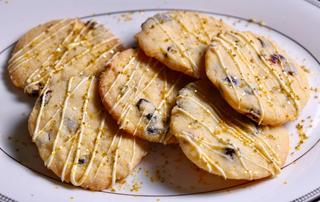Sugar, Spice, and Everything Nice - Pumpkins aren’t just for pie anymore


Written by Carol J Alexander
September 30, 2019
Fall is upon us and pumpkin spice is the order of the day—the first dip in mercury sends folks out for everything from a pumpkin spice latte and pumpkin ice cream to pumpkin spice Oreos and Twinkies!
It’s no surprise that pumpkins of all shapes and sizes have become America’s favorite cucurbit. Pumpkin patches, festivals, and even mazes populate our rural landscape. Competitors declare all-out war for growing the heaviest pumpkin in the U.S., which at this writing was a whopping 2528 pounds. Steve Geddes of Boscawen, New Hampshire won this distinction, and a $6,000 purse, in 2018.
But I can’t carry a pumpkin that big!
Ok, so we’re not going to talk about those behemoths. We want to know what varieties of pumpkin make for the best uses around the home. (After all, when was the last time you saw a one-ton pumpkin at a supermarket?)
Large, but manageable, are the Jack o’ lantern varieties. The extra-large choices, weighing between 25-40 pounds, include the Champion and the Early Giant. Both are your typical orange pumpkins shaped more tall than round.
A few examples slightly smaller than these include the Rock Star, Expert, and Howden. These typically weigh in at around 20-25 pounds. And if you want one a little more head-shaped than the others, choose the Expert variety. For something under 20 pounds, consider the Racer, Rocket, or Tom Fox.
When making Jack o’ lanterns with the kids, stay safe by drawing your faces with a permanent marker or paint pen. Their creations last longer this way, too.
Love fall but dislike orange?
Not making Jack o’ lanterns? Not a fan of orange? No worries. Pumpkins come in many colors. Consider the Jarrahdale. This Australian heirloom variety is flattened but round and a light blue/grey color. The Cinderella pumpkin is bright red and the Casper is white. The Long Island Cheese pumpkin is the color of, well, cheese, and the Fairytale is a dark green with an orange blush.
If you really want to get creative, go with a striped or splotched variety. The Speckled Hound has beautiful peach and muted green splotches. The Blaze is alight with yellow and orange stripes. And, the Kakai is a light orange with green stripes.
Colored pumpkins come in various sizes, too, lending them to decorating both inside and out. Wouldn’t a wheelbarrow of large pumpkins of assorted colors surrounded by mums and corn shocks look fabulous at the end of the driveway? Or, fill a wooden bowl with small, colored ones for your dining room table or sideboard.
Other ways to decorate with pumpkins
For an artsy twist to the traditional Jack o’ lantern, carve out the inside of your pumpkin, saving the top. Using an electric drill, pierce the sides of the pumpkin in a pattern. Use different sized bits to create different-sized holes. Place a candle or battery-operated light inside and replace the top. Set on your front porch to welcome anyone who stops by.
A pumpkin topiary is another stunning idea for your entryway. Gather three pumpkins—small, medium, and large. Paint each one a different color or decorate in some way. (The Flat Stacker pumpkin is perfect for this because it’s flat and white.) A few ideas include wrapping with burlap ribbon or raffia, monogramming with a permanent marker, or embedding the skin with rhinestones. Once you’re done decorating the individual pumpkins, stack them in a planter filled with dried greenery—the largest on the bottom, the medium-sized one in the middle, and the smallest on the top. Consider adding greenery between them and topping with a bow.
Miniature pumpkins make great additions to your dining room centerpiece, mantle over the fireplace, or other decorations for the season. Having a dinner party? Paint your guests’ names on the littlest cucurbits and use as place markers.
For a clever, autumn candle holder, carve the center from a miniature pumpkin and fill with a tea light. When entertaining, line the walkway or porch rail with them. Put them on the kitchen counter, bathroom vanity, dresser top, or other places around the house.
Entertaining? Imagine serving punch from a pumpkin! Simply carve out the insides, fill with the punch, and enjoy!
Can we eat already?
True, some folks do like to eat pumpkin and for this, choose a small variety. When shopping, look for ones labeled “pie pumpkin” or “sugar pumpkin.” They have a denser flesh and less water than their larger cousins.
By name, consider Autumn Gold, New England Pie Pumpkin, Baby Pam, or Cinderella. And when you’re ready to replace the wheelbarrow of pumpkins at the end of the driveway with a different seasonal decoration both the Jarrahdale and Cinderella make great eating.
Tags:Seasonal Living

Acreage Life is part of the Catalyst Communications Network publication family.
















